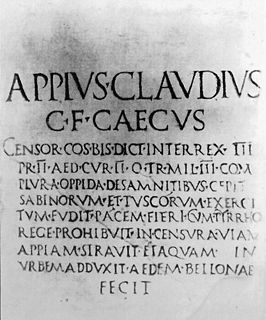This article needs additional citations for verification .(November 2013) (Learn how and when to remove this template message) |
Syllable stress of botanical namesvaries with the language spoken by the person using the botanical name. In English-speaking countries, the Botanical Latin places syllable stress for botanical names derived from ancient Greek and Latin broadly according to two systems, either the Reformed academic pronunciation, or the pronunciation developed initially in some large part by British gardeners, horticulturists, naturalists, and botanists of the 19th century. The two systems of pronunciation are sometimes referred to as the "classical method" and the "ecclesiastical method". [1] The two systems differ significantly in pronunciation, α but little in syllable stress. [1]
Botanical Latin is a technical language based on New Latin, used for descriptions of botanical taxa. Until 2012, International Code of Botanical Nomenclature mandated Botanical Latin to be used for the descriptions of most new taxa. It is still the only language other than English accepted for descriptions. The names of organisms governed by the Code also have forms based on Latin.

The United Kingdom of Great Britain and Northern Ireland, commonly known as the United Kingdom (UK) or Britain, is a sovereign country located off the north-western coast of the European mainland. The United Kingdom includes the island of Great Britain, the north-eastern part of the island of Ireland, and many smaller islands. Northern Ireland is the only part of the United Kingdom that shares a land border with another sovereign state, the Republic of Ireland. Apart from this land border, the United Kingdom is surrounded by the Atlantic Ocean, with the North Sea to the east, the English Channel to the south and the Celtic Sea to the south-west, giving it the 12th-longest coastline in the world. The Irish Sea separates Great Britain and Ireland. The United Kingdom's 242,500 square kilometres (93,600 sq mi) were home to an estimated 66.0 million inhabitants in 2017.
Contents
What follow are the rules of stress of reformed academic pronunciation of Latin (intended to approximate the stress rules of ancient spoken Latin). Words of Greek origin are generally pronounced according to the same rules; native ancient Greek rules of stress are not used.
Generally in Latin each vowel or diphthong belongs to a single syllable. Classical Latin diphthongs are ae, au, and oe. Diphthongs from Greek can include oi, eu, ei, and ou, and ui also occasionally occurs in botanical Latin. Syllables end in vowels, unless there are multiple consonants, in which case the consonants are divided between the two syllables, with certain consonants being treated as pairs. In words of two syllables, the stress is on the first syllable. Words that contain three or more syllables have stresses accorded to their syllables by the quality and location of the different vowels in the words. In words of more than two syllables, the stress is on the penultimate syllable when the syllable contains a long vowel or diphthong, otherwise the stress is on the antepenultimate syllable. [2]
Penult is a linguistics term for the second to last syllable of a word. It is an abbreviation of penultimate, which describes the next-to-last item in a series. The penult follows the antepenult and precedes the ultima. For example, the main stress falls on the penult in such English words as banána, and Mississíppi, and just about all words ending in –ic such as músic, frántic, and phonétic. Occasionally, "penult" refers to the last word but one of a sentence.
Whether a vowel is long or short in a classical Latin word is a function of the vowel and its relationship to the consonants that precede or follow it. [3] Modern Latin dictionaries and textbooks may contain diacritics called macrons for long vowels or breves for short vowels. Botanical Latin does not traditionally include macrons or breves, and they are prohibited (as diacritics) by the International Code of Nomenclature for algae, fungi, and plants (Article 60.6). Some books follow the mediaeval tradition to add an acute accent to mark the stressed syllable.[ citation needed ]
A macron is a diacritical mark: it is a straight bar (¯) placed above a letter, usually a vowel. Its name derives from Ancient Greek μακρόν (makrón) "long", since it was originally used to mark long or heavy syllables in Greco-Roman metrics. It now more often marks a long vowel. In the International Phonetic Alphabet, the macron is used to indicate a mid-tone; the sign for a long vowel is instead a modified triangular colon ⟨ː⟩.
A breve is the diacritic mark ˘, shaped like the bottom half of a circle. As used in Ancient Greek, it is also called vrachy, or brachy. It resembles the caron but is rounded; the caron has a sharp tip.

The International Code of Nomenclature for algae, fungi, and plants (ICN) is the set of rules and recommendations dealing with the formal botanical names that are given to plants, fungi and a few other groups of organisms, all those "traditionally treated as algae, fungi, or plants". It was formerly called the International Code of Botanical Nomenclature (ICBN); the name was changed at the International Botanical Congress in Melbourne in July 2011 as part of the Melbourne Code which replaced the Vienna Code of 2005.

